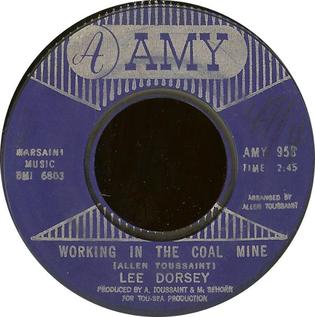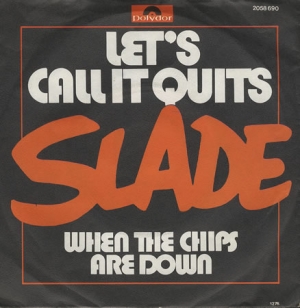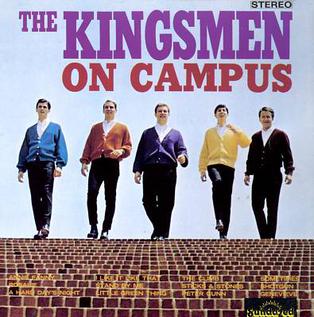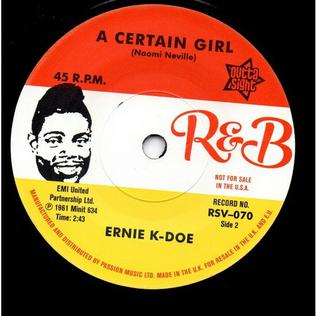
Paul Vaughn Butterfield was an American blues harmonica player, singer and bandleader. After early training as a classical flautist, he developed an interest in blues harmonica. He explored the blues scene in his native Chicago, where he met Muddy Waters and other blues greats, who provided encouragement and opportunities for him to join in jam sessions. He soon began performing with fellow blues enthusiasts Nick Gravenites and Elvin Bishop.

"Shake, Rattle and Roll" is a song written in 1954 by Jesse Stone and first recorded that year by Big Joe Turner, whose version ranked No. 127 on the Rolling Stone magazine list of The 500 Greatest Songs of All Time.

Allen Richard Toussaint was an American musician, songwriter, arranger, and record producer. He was an influential figure in New Orleans rhythm and blues from the 1950s to the end of the century, described as "one of popular music's great backroom figures." Many musicians recorded Toussaint's compositions. He was a producer for hundreds of recordings: the best known are "Right Place, Wrong Time", by longtime friend Dr. John, and "Lady Marmalade" by Labelle.

Irving Lee Dorsey was an American pop and R&B singer during the 1960s. His biggest hits were "Ya Ya" (1961) and "Working in the Coal Mine" (1966). Much of his work was produced by Allen Toussaint, with instrumental backing provided by the Meters.

The Equals are an English rock band. They are best remembered for their million-selling chart-topper "Baby, Come Back", though they had several other chart hits in the UK and Europe. Drummer John Hall founded the group with Eddy Grant, Pat Lloyd and brothers Derv and Lincoln Gordon, and they were noted as being "the first major interracial rock group in the UK" and "one of the few racially mixed bands of the era".

"Working in the Coal Mine" is a song with music and lyrics by the American musician and record producer Allen Toussaint. It was an international hit for Lee Dorsey in 1966, and has been recorded by other musicians including Devo in 1981.

"Yes We Can Can" is a funk song written by Allen Toussaint, and first released by Lee Dorsey in 1970. It was popularized when it was recorded by the American R&B girl group the Pointer Sisters.

What's Shakin' is a compilation album released by Elektra Records in May 1966. It features the earliest studio recordings by the Lovin' Spoonful and the Paul Butterfield Blues Band, as well as the only released recordings by the ad hoc studio group Eric Clapton and the Powerhouse, until they were reissued years later.

"Dimples" is a song written and recorded by blues singer-songwriter John Lee Hooker in 1956. It is an ensemble piece, with Hooker accompanied by Jimmy Reed's backup band. Eight years after its first release, it became Hooker's first record to appear in the British record charts. Called a "genuine Hooker classic" by music critic Bill Dahl, it is one of his best-known songs, with interpretations by several artists.
"Mary, Mary" is a song written by Michael Nesmith and first recorded by the Paul Butterfield Blues Band for their 1966 album East-West. Nesmith's band, the Monkees, later recorded it for More of the Monkees (1967). Hip hop group Run–D.M.C. revived the song in the late 1980s, with an adaptation that appeared in the U.S. record charts.

"The Hunter" is a blues song first recorded by Albert King in 1967 for his landmark album Born Under a Bad Sign. It was written by Stax Records' house band, Booker T. and the MGs, and Carl Wells. Along with "Born Under a Bad Sign" and "Crosscut Saw", "The Hunter" is one of King's best-known and most-recorded songs. In 1969, Ike & Tina Turner's version reached the singles charts in the U.S.

"Let's Call It Quits" is a song by the British rock band Slade, released in 1976 as the second single from their sixth studio album Nobody's Fools. The song was written by lead vocalist Noddy Holder and bassist Jim Lea, and produced by Chas Chandler. It reached No. 11 in the UK, remaining in the charts for seven weeks.

The Kingsmen on Campus is the fourth album by the rock band The Kingsmen, released in 1965.

This is the discography for American R&B-jazz musician Allen Toussaint.

"A Certain Girl" is a rhythm and blues song written by Allen Toussaint, with the credit listed under his pen name Naomi Neville. New Orleans R&B singer Ernie K-Doe recorded it in 1961. Minit Records released the song as the B-side of "I Cried My Last Tear".

"Ooh Poo Pah Doo" is a song written and performed by Jessie Hill. It was arranged and produced by Allen Toussaint. The single reached No. 3 on the Billboard R&B chart and No. 28 on the Hot 100 in 1960.
"Holy Cow" is a song written by Allen Toussaint and performed by Lee Dorsey. It reached #6 on the UK Singles Chart, #10 on the U.S. R&B chart, and #23 on the U.S. pop chart in 1966. It was featured on his 1966 album Working in the Coal Mine - Holy Cow.

The Paul Butterfield Blues Band was an American blues rock band from Chicago, Illinois. Formed in the summer of 1963, the group originally featured eponymous vocalist and harmonicist Paul Butterfield, guitarist Elvin Bishop, bassist Jerome Arnold and drummer Sam Lay. The band added guitarist Mike Bloomfield and keyboardist Mark Naftalin before recording their eponymous debut album which was released in October 1965. The founding sextet were inducted into the Rock and Roll Hall of Fame in 2015, as was the second album (East-West) drummer Billy Davenport.

The Blues is the second album by blues artist B.B. King, released in 1958 by the Bihari brothers on their budget Crown label. The album collects 12 tracks that King recorded between 1951 and 1958 for Kent and RPM. As common practice with the record label, Crown released The Blues off the strength of the single "When My Heart Beats Like a Hammer", a Top 10 R&B chart single in 1958, to help sell a collection of less-popular songs. King's signature style of single-note riffs and powerful string bends is present on the album, however it is also commanded by horn-driven performances

Night People is an album by the American musician Lee Dorsey, released in 1978. It was Dorsey's final studio album, although a few country-influenced tunes were recorded before his death in 1986.


















